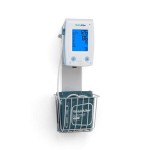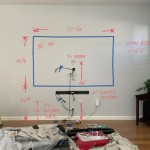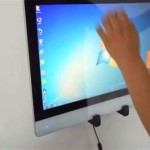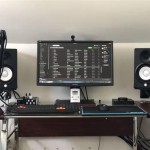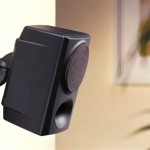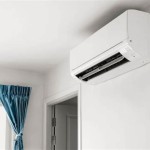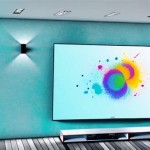Wall Mount TV Extension Cord: Optimizing Power Delivery and Cable Management
Mounting a television on a wall offers numerous aesthetic and functional advantages, freeing up floor space and creating a streamlined entertainment center. However, this setup often presents challenges related to power accessibility. Standard power outlets are frequently located too low or too far from the mounted TV, necessitating the use of extension cords. Selecting and implementing the appropriate extension cord for a wall-mounted TV is crucial for safety, performance, and maintaining a clean, organized installation.
A wall mount TV extension cord differs from a typical extension cord in several ways. It is typically designed with a low profile, often white or neutral in color to blend more seamlessly with walls, and is engineered for safe and reliable power delivery specifically for electronics. Factors such as gauge, length, safety certifications, and outlet configuration must be carefully considered to ensure compatibility and adhere to electrical codes.
Understanding the Importance of a Suitable Extension Cord
The use of an inappropriate or substandard extension cord can introduce several potential risks. Overloading an extension cord by connecting devices that draw more power than it is rated to handle can lead to overheating, posing a fire hazard. It can also damage the connected electronic devices. Conversely, using an extension cord with an insufficient gauge for the intended load can result in voltage drop, affecting the performance of the TV and potentially damaging its internal components over time.
Furthermore, improper cable management can lead to unsightly tangles and potential tripping hazards. A dedicated wall mount TV extension cord, often combined with cable management solutions, helps to conceal wires and create a cleaner, more professional appearance. This is particularly important for wall-mounted TVs, where exposed wires are more visible and can detract from the overall aesthetic.
Selecting a wall mount TV extension cord is not simply about bridging the distance between the outlet and the TV. It's about ensuring safe, reliable power delivery, protecting your electronics, and maintaining an organized and visually appealing entertainment space.
Key Considerations When Choosing a Wall Mount TV Extension Cord
Several factors must be considered when selecting an appropriate extension cord for a wall-mounted TV installation. Failing to address these considerations can lead to safety issues, performance problems, or aesthetic drawbacks.
1. Gauge and Amperage: The gauge of an extension cord refers to the thickness of the wires inside. A lower gauge number indicates a thicker wire, which can carry more current. The amperage rating indicates the maximum amount of current the cord can safely handle. It is crucial to select an extension cord with a gauge and amperage rating that is appropriate for the total power draw of the TV and any other devices connected to it, such as streaming devices, gaming consoles, or soundbars. The power requirements of these devices are usually listed on a label on the back of the device or in the user manual. It’s important to factor in a safety margin and select a cord that exceeds the anticipated power demand.
A common mistake is using a thin, inexpensive extension cord for high-powered electronics. This can lead to overheating, voltage drop, and potential damage to the TV. Consulting with a qualified electrician is recommended if you are unsure about the power requirements of your setup.
2. Length and Placement: The length of the extension cord should be carefully chosen to minimize excess cable while still allowing for flexibility in TV placement. Avoid using excessively long cords, as they can increase the risk of tripping and create unsightly clutter. Consider the distance from the outlet to the TV, but also factor in any bends or turns the cord needs to navigate. Accurately measuring the required length beforehand is essential. Purchasing an extension cord that is too short means having to purchase another one. Conversely, an extension cord that is too long will lead to excessive cable management.
In addition to length, think about the placement of the extension cord. Ideally, it should be routed behind the wall using in-wall rated cabling and a power outlet relocation kit. However, if running the cord along the surface of the wall, select a cord that is a color that matches the wall. This will reduce the visibility of the extension cord. Using a cord that blends with the wall's color helps to create a cleaner, more appealing aesthetic.
3. Safety Certifications and Features: Look for extension cords that are certified by recognized testing laboratories such as UL (Underwriters Laboratories) or ETL (Electrical Testing Laboratories). These certifications indicate that the cord has been tested and meets stringent safety standards. A certified extension cord provides assurance that it is properly constructed and will perform safely under normal operating conditions.
Beyond certifications, consider extension cords with built-in safety features such as surge protection and overload protection. Surge protection helps to protect the connected TV and other devices from voltage spikes that can damage sensitive electronic components. Overload protection typically involves a circuit breaker that will trip and interrupt the power supply if the cord is overloaded, preventing overheating and potential fire hazards. Features such as tamper-resistant outlets provide another layer of safety, particularly in households with children. All extension cords should be specifically rated for indoor use.
Optimizing Installation and Cable Management
Even with the correct extension cord selected, a neat and safe installation requires careful consideration of cable management practices. Effective cable management minimizes clutter, reduces the risk of tripping, and enhances the overall aesthetic of the wall-mounted TV setup.
1. Concealing Cables: The primary goal of cable management is to conceal the extension cord and other cables running to the TV. Several options are available for achieving this, ranging from basic solutions to more elaborate setups. The most common method is to use cable concealing kits, which typically consist of plastic channels that attach to the wall and hide the cables within. These kits are available in various sizes and colors to match different wall surfaces and cable configurations. They can be easily painted to blend seamlessly with the wall color. Some kits include adhesive backing for easy installation, while others require screws for a more secure attachment.
Another option is to use in-wall rated cabling in conjunction with a power outlet relocation kit. This method involves running the extension cord and other cables behind the wall, connecting them to a recessed power outlet and cable management plate near the TV. This creates a completely clutter-free appearance, but it requires more extensive installation and may necessitate the services of a qualified electrician.
Regardless of the method chosen, ensure that the cables are securely fastened and routed in a way that prevents them from being pinched, crimped, or damaged. Avoid running cables across doorways or in areas where they could be subjected to heavy traffic to prevent accidents.
2. Utilizing Cable Ties and Organizers: Even when using cable concealing kits or in-wall wiring, cable ties and organizers are essential for keeping the cables neatly bundled and organized. Cable ties can be used to group cables together, preventing them from becoming tangled and making it easier to manage them within the concealed area. Velcro cable ties are preferable to plastic zip ties, as they can be easily adjusted and reused. Cable organizers, such as cable sleeves and cable clips, can further enhance the organization and prevent cables from slipping or falling out of place.
Labeling cables can also be beneficial, especially for complex setups with multiple devices connected to the TV. Labeling each cable with the corresponding device makes it easier to identify and troubleshoot connections in the future.
3. Adhering to Electrical Codes and Best Practices: When installing a wall-mounted TV and connecting the extension cord, it is crucial to adhere to all applicable electrical codes and best practices. This includes ensuring that the extension cord is properly grounded, that the outlets are not overloaded, and that the cables are installed in a safe and compliant manner. If you are unsure about any aspect of the installation, it is always best to consult with a qualified electrician. An electrician can assess the electrical system, ensure that it is adequate for the TV and other connected devices, and provide guidance on safe installation practices.
Overloading a circuit can lead to overheating, tripping breakers, and potentially causing a fire. It is important to know the amperage rating of the circuit and the total power draw of all the devices connected to it. Avoid plugging multiple high-powered devices into the same outlet or circuit. Using surge protectors can help to mitigate the risk of voltage spikes and protect sensitive electronic equipment.
When working with electrical wiring, always turn off the power at the circuit breaker before making any connections. Use insulated tools and wear appropriate safety gear, such as gloves and eye protection. Inspect the extension cord and other cables regularly for any signs of damage, such as frayed wires or cracked insulation. Replace damaged cords immediately to prevent electrical hazards.
By following these guidelines and taking the necessary precautions, a wall-mounted TV installation can be both aesthetically pleasing and electrically safe.

Extension Cord Is It Safe To Mount A Surge Protector Strip Behind Wall Mounted Television Home Improvement Stack Exchange

How To Hide Tv Power Cord And Cables No Outlet Wiring Needed Easy Diy

Clear The Clutter How To Hide Tv Wires And Cords Guest Post From Young House Love

Diy Tv Wall Mount Tutorial How To Cord Manage

Wiring Male Plug Installed In Wall Home Improvement Stack Exchange

Cord Hider Wall Mount Tv Self Temu

Dual Outlet In Wall Cable Management System With Large Tv Mount Diy Model Two Ck Tvml

Our Home From Scratch

Sleek Socket Ultra Thin Outlet Concealer For Tv Cord Kit 2 Surge Protector Strip Wal Com

Extension Cord 25ft Ntonpower Power Strip With Long 3 Outlet 2 Usb Compact Desktop Charging Station Wall Mount For Tv Living Room Dorm Office And Nightstand White Newegg Com

